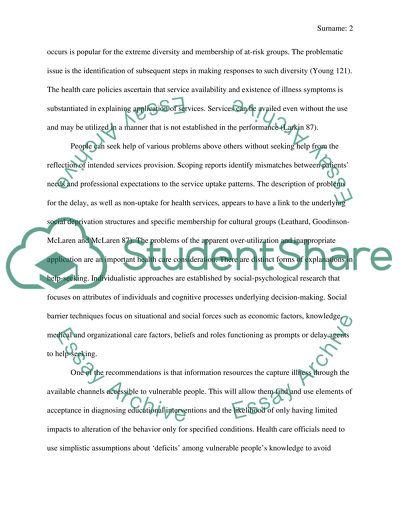Cite this document
(Management of Risk and Protection of Vulnerable Individuals in Health Report Example | Topics and Well Written Essays - 2000 words, n.d.)
Management of Risk and Protection of Vulnerable Individuals in Health Report Example | Topics and Well Written Essays - 2000 words. https://studentshare.org/nursing/1681581-management-of-risk-and-protection-of-vulnerable-individuals-in-health-and-social-care
Management of Risk and Protection of Vulnerable Individuals in Health Report Example | Topics and Well Written Essays - 2000 words. https://studentshare.org/nursing/1681581-management-of-risk-and-protection-of-vulnerable-individuals-in-health-and-social-care
(Management of Risk and Protection of Vulnerable Individuals in Health Report Example | Topics and Well Written Essays - 2000 Words)
Management of Risk and Protection of Vulnerable Individuals in Health Report Example | Topics and Well Written Essays - 2000 Words. https://studentshare.org/nursing/1681581-management-of-risk-and-protection-of-vulnerable-individuals-in-health-and-social-care.
Management of Risk and Protection of Vulnerable Individuals in Health Report Example | Topics and Well Written Essays - 2000 Words. https://studentshare.org/nursing/1681581-management-of-risk-and-protection-of-vulnerable-individuals-in-health-and-social-care.
“Management of Risk and Protection of Vulnerable Individuals in Health Report Example | Topics and Well Written Essays - 2000 Words”. https://studentshare.org/nursing/1681581-management-of-risk-and-protection-of-vulnerable-individuals-in-health-and-social-care.


